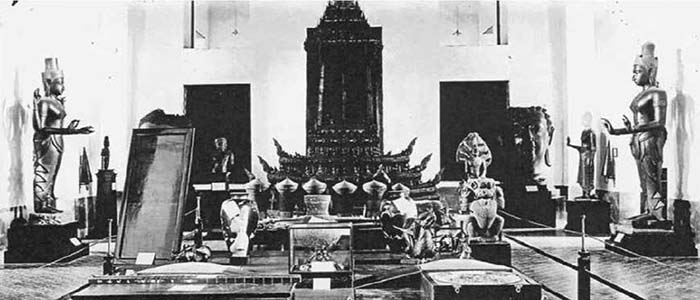
โบราณคดีของภัณฑารักษ์
The Archaeology of Curating
โดย วิภาช ภูริชานนท์ / By Vipash Purichanont
Damrong Journal, Vol 13, No.2, 2014
บทคัดย่อ:
ในปัจจุบันการคิวเรตได้กลายเป็นทักษะที่ได้รับความนิยมฝึกฝนมากขึ้นทุกทีในบริบทของสังคมตะวันตกเนื่องจากโลกหลังอุตสาหกรรมทำให้การคัดสรรเป็นทักษะที่มีคุณค่าไม่แพ้การสร้างสรรค์ในขณะที่การคิวเรตในประเทศไทย
ยังคงมีความสัมพันธ์กับมิวเซียมอย่างเหนียวแน่น บทความฉบับนี้ต้องการที่จะใช้วิธีวิทยาของโบราณคดีเชิงปรัชญาเพื่อขุดค้นจุดกำเนิดอื่นๆ ของคำว่าคิวเรตที่ถูกใช้ขึ้นในโลกตะวันตก พร้อมทั้งเปรียบเทียบกับพัฒนาการของคำดังกล่าวในประเทศไทยเพื่อให้เห็นวงศาวิทยาของศาสตร์นี้อย่างชัดเจนมากยิ่งขึ้น พร้อมทั้งนำเสนอว่าการคิวเรตพึ่งมีความเกี่ยวข้องกับมิวเซียมในยุคสมัยใหม่เท่านั้น ความหมายอีกอย่างหนึ่งตามรากศัพท์ของคำว่าคิวเรต ยังหมายถึง การดูแล และการพิจารณาผู้เขียนเสนอว่าการคิวเรตในประเทศไทยควรจะให้ความสำคัญกับ “การดูแล”มากยิ่งขึ้น และต้องก้าวพ้นการเป็นแค่ทักษะของการ ‘รักษา’
ABSTRACT:
Curating is widely practiced in the sphere of modern life. Postindustrial, western society has transformed a skill in selecting into a valuable asset while, conversely, curating in Thailand has remained bound to museology. This article uses philosophical archeology as a methodology through which we can delve into the other origins of curating and compare them with its etymological meaning in the Thai language. The paper argues that the term for curator in Thai was constructed merely to assist in the description of a modern museum’s labour force and has dismissed the historical development of the term. It also fails to take into account the future requirements of the discipline. The article further argues that curating in Thailand needs to be redefined with ‘care’ as a fundamental principle which performs a task that goes beyond that of ‘preservation.’











